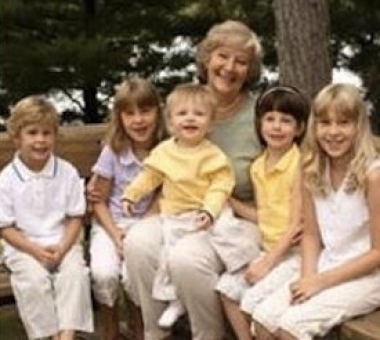Stories of Hope & Recovery

Jan Brown
Jan’s Heart Attack Was Not a Typical TV Heart Attack
Jan Brown thought it might be the flu. Over dinner at a friend's home, she suddenly felt as if a three-inch wide steel belt were wrapped—and tightening—around the top of her shoulders. She excused herself from the table. A few minutes later, she told her friends, “Boy, all of a sudden I don’t feel good. And now my jaw hurts.”
Luckily, Jan was with informed dinner companions. Right away, one said, “You’re having a heart attack.” Others recalled advice about aspirin for heart attack. Jan’s hosts found four baby aspirin for Jan to take. Then, despite her protests that she would look like a fool showing up at the hospital, her friends prevailed. They took her to nearby Ridgeview Medical Center, a community hospital in the suburbs of Minneapolis.
In the emergency room, things started to blur once she took the medications the doctor gave her. “You are having a heart attack,” Jan recalls the doctor telling her. “And we’re transferring you to Abbott Northwestern Hospital.” Abbott Northwestern is home to the Minneapolis Heart Institute, which is recognized as a leading heart center. An ambulance took Jan 33 miles to the downtown hospital. When she arrived, she recalls being moved from the gurney to the table and meeting her interventional cardiologist Dr. Timothy Henry.
“The next thing I knew, I was in my room at Abbott Northwestern. I had had angioplasty and a stent—and I felt fit as a fiddle,” Jan said.
She learned later that just 78 minutes had passed from the time she arrived at the Ridgeview emergency room until Dr. Henry opened her clogged artery with a tiny balloon and implanted a drug-eluting stent.
Timely treatment is critical for heart attack patients: The more time that passes before a blockage is opened and blood flow restored to the heart, the greater the risk of damage to the heart muscle.
Jan would have been released from the hospital more quickly, but she stayed several extra days as doctors evaluated and approved her for participation in a clinical trial. The trial, now nearing its two-year end-point, is testing the safety of infusing adult stem cells, taken from bone marrow, into heart attack patients to help regenerate damaged heart muscle. Adult stem cells hold promise of developing into the tissue for which they have been programmed, such as heart muscle.
“Heart problems were the last thing on my mind,” said Jan, recalling the night of her heart attack. “I had no history of heart disease in my family. I had walked two to three miles at least two to four times a week for the past 18 years. Plus, in recent years, I had worked out at an exercise studio two to three times a week. I had never used tobacco and had always watched what I ate to keep my weight down. I didn’t have high cholesterol, and my blood pressure was slightly high but controlled with medication.”
After the heart attack, thoughts that maybe “I’m not this healthy person I thought I was” left Jan a little insecure. But those feelings vanished after she began a cardiac rehabilitation program.
“They push you in a controlled situation to do more than you might push yourself to do,” she said. “That reassured me that I can still be as active as I want to be.”
Once she received the OK, Jan returned to her exercise routines. Today, she continues to take aspirin and antiplatelet medications (blood thinners to help prevent clots from forming near her stent), as well as other medications to control blood pressure and cholesterol.
“I felt fine up until the minute of the heart attack and I’ve felt great since the procedure,” Jan says. “I’m a very lucky lady.”
When a heart attack strikes, seconds count for everyone, regardless of sex, age, or ethnicity. Any delay in treating your heart attack increases your chances of permanent, irreparable damage to your heart—and it could cost you your life. That’s why knowing heart attack symptoms, including those milder symptoms more common in women, is valuable information to learn and share with others.